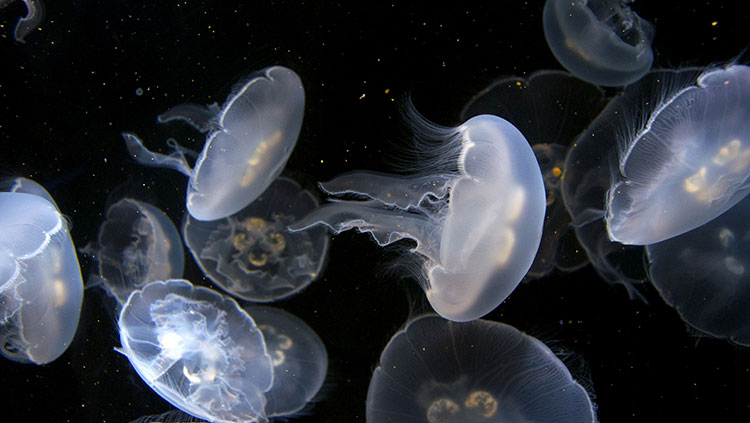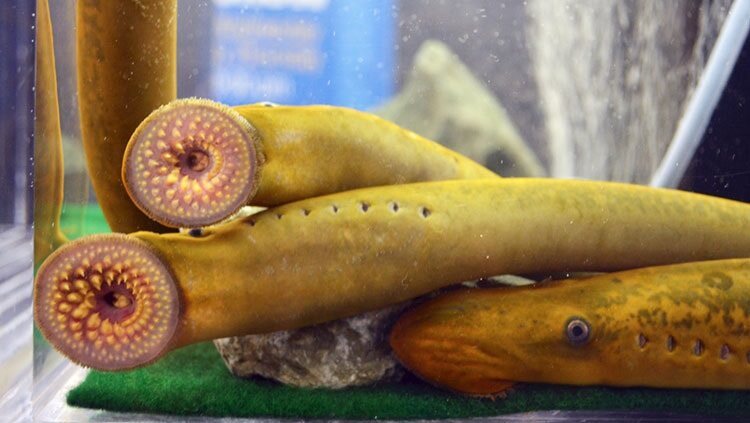ICYMI: Scientists Create Super Speedy Bionic Jellyfish
- Published6 Feb 2020
- Author Alexis Wnuk
- Source BrainFacts/SfN

These were the top neuroscience stories for the week of January 27, 2020.
Scientists Create Super Speedy Bionic Jellyfish
Jellyfish take their time. They might pick up the pace to avoid predators but otherwise they bob along at a pretty consistent speed, opening and closing their bell to propel themselves languidly through the ocean. Until now, that is. Engineered “bionic” jellyfish can zip around three times faster. That’s because scientists gave the muscle controlling the bell a little boost. In a study published January 29 in Science Advances, scientists embedded electrodes and a microchip into this muscle, which is ordinarily controlled by the rhythmic firing of pacemaker neurons. The extra zaps of electricity from the electrodes helped the jellyfish swim three times faster while expending only twice as much energy.
Related: Jellyfish are one of many aquatic creatures that get by without brains.
Read more: A Bionic Jellyfish Swims With Manic Speed (for a Jellyfish) (Wired)
Lab-Grown Mini-Brains Differ From Real Brains in Important Ways
Tiny clumps of lab-grown brain cells — called brain organoids or mini-brains — let scientists study the earliest stages of human brain development. But they don’t perfectly mimic the human brain. In a study published January 29 in Nature, researchers report mini-brains differ from real brains in several ways. The researchers used genetic tests to identify the types of cells in mini-brains and see how they stack up to real brains. While the mini-brains contained broad classes of neurons, they lacked the clearly defined cell types found in the human brain. The cells also showed signs of metabolic stress.
Big picture: Mini-brains are not perfect models of early brain development. But they’re still an important tool for scientists. We previously reported how scientists have used mini-brains to learn how Zika virus hurts the developing brain.
Read more: Scientists Find Imperfections In 'Minibrains' That Raise Questions For Research (NPR)
Fatal Car Crashes Increase After Switch to Daylight Savings Time
Moving the clock forward in the spring does more than rob you of an hour of sleep. It’s also linked to an increase in fatal car crashes. In a study published January 30 in Current Biology, scientists analyzed weekly reports of fatal car crashes that happened in the U.S. between 1996 and 2017, and found crashes increased 6% in the week following the shift to daylight savings time. On average, the transition accounts for an extra 29 crashes each year.
Big picture: Disruptions to our normal sleep/wake cycles — called circadian rhythms — have profound implications on our health.
Read more: Daylight saving time linked to an increase in traffic accidents (New Scientist)
CONTENT PROVIDED BY
BrainFacts/SfN


















